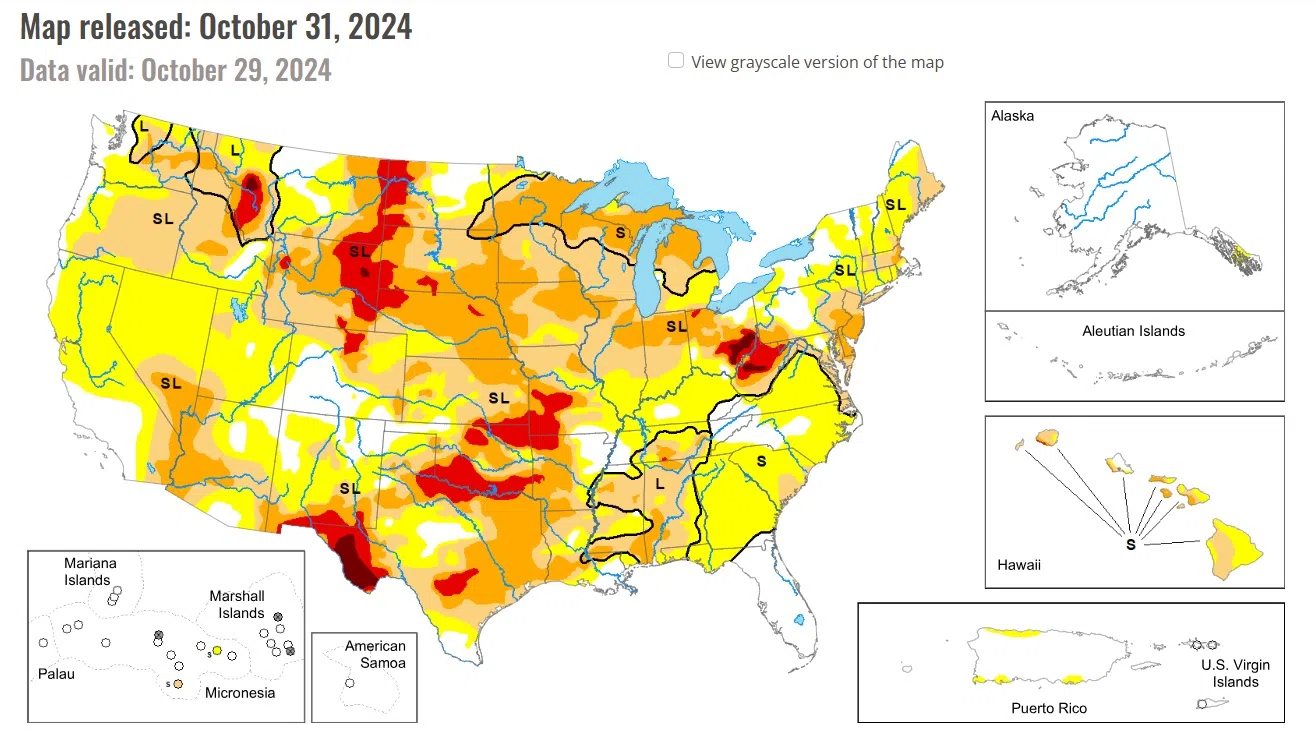The dry pattern that has been impacting much of the country has continued into this current period. The wettest areas were along the coast in the Pacific Northwest, with some locations recording over 2 inches of rain for the week. Other areas receiving some precipitation were in the Four Corners region, the Midwest and parts of the South, but many of these totals were minimal and did little to impact the drought conditions.
For the Lower 48 states, there has not been this much drought shown on the U.S. Drought Monitor since December 2022.
Dryness again dominated the High Plains region with only areas of far southeast Nebraska and northeast Kansas, northeast Wyoming and northwest South Dakota recording any significant precipitation. Coupled with the dryness, temperatures have been unseasonably warm for the region with most all areas 4-8 degrees above normal for the week. Drought expanded and intensified across the region this week with severe and extreme drought expanding over western North Dakota, and moderate drought and abnormally dry conditions expanding over the southeast. Severe and extreme drought expanded over much of western and southern South Dakota and also over western and northern Nebraska.
The Midwest region saw widespread degradation this week with moderate and severe drought expanding over lower Michigan, and severe drought expanding over northwest Ohio, northern Indiana, and northern Illinois. Moderate drought pushed south in Illinois and Indiana while abnormally dry conditions expanded across almost all of Kentucky. In southwest Missouri, severe and extreme drought expanded along with a push of moderate drought to the east. Severe drought also expanded along with moderate drought in western and northwest Missouri.
In Iowa, moderate and severe drought expanded in the west and eastern portions of the state. In Wisconsin, moderate drought expanded in the central portions of the state and severe drought expanded in the northwest. Moderate drought expanded in northern Minnesota and severe drought expanded in both the southwest and southeast areas of the state.
Source: National Drought Mitigation Center, University of Nebraska-Lincoln





Comments